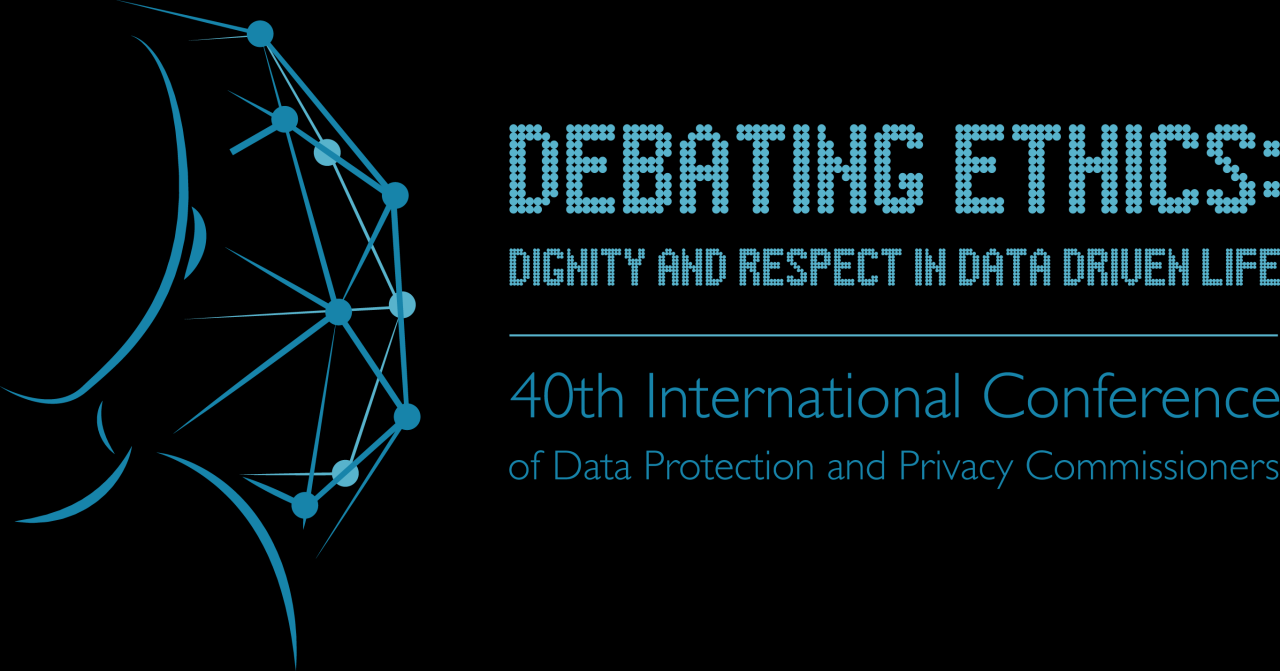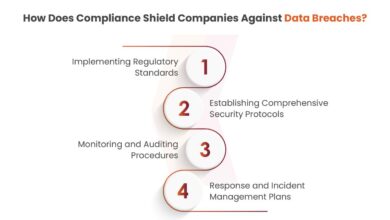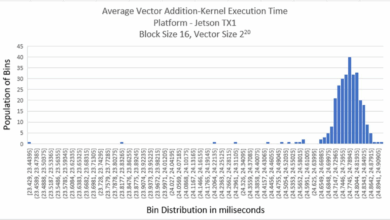
Establishing a Data Protection Committee for Boards
Establishing a data protection committee for boards is no longer a luxury; it’s a necessity. In today’s hyper-connected world, data breaches are a constant threat, and organizations need robust mechanisms to protect sensitive information. This post dives into the practical steps of creating a highly effective data protection committee, from legal groundwork to ongoing training and resource allocation.
We’ll explore the crucial role these committees play in ensuring compliance, mitigating risks, and building trust with stakeholders.
We’ll cover everything from crafting a committee charter and defining clear roles and responsibilities to establishing effective communication strategies and securing the necessary resources. Think of this as your comprehensive guide to navigating the complex landscape of data protection governance at the board level. Let’s get started!
Legal and Regulatory Landscape for Data Protection Committees

The establishment of data protection committees at the board level is no longer a best practice; it’s rapidly becoming a necessity driven by a rapidly evolving legal and regulatory landscape. The increasing volume and sensitivity of data handled by organizations, coupled with the growing awareness of data breaches and their consequences, have led to stricter regulations globally. These committees are vital for ensuring compliance, mitigating risks, and fostering a culture of data protection within organizations.The key legal and regulatory drivers behind the formation of these committees are multifaceted.
The General Data Protection Regulation (GDPR) in Europe, the California Consumer Privacy Act (CCPA) in the US, and similar legislation in other jurisdictions have significantly increased the accountability of organizations for the personal data they process. These regulations often mandate specific data protection measures, including the appointment of Data Protection Officers (DPOs) and the establishment of internal mechanisms for oversight and compliance.
Failure to comply can result in substantial fines and reputational damage.
Variations in Legal Requirements Across Jurisdictions
Legal requirements regarding data protection committees vary considerably across different jurisdictions. While some regions might only mandate the appointment of a DPO, others explicitly or implicitly encourage, or even require, the formation of board-level committees to oversee data protection strategies. For instance, the GDPR doesn’t explicitly require a data protection committee, but its emphasis on accountability and proactive risk management strongly suggests its value.
In contrast, some jurisdictions might have specific legislation outlining the composition, responsibilities, and reporting structures of such committees. These variations often reflect the specific cultural, political, and economic contexts of each region. For example, the composition requirements might range from a purely executive-level committee to one that includes representatives from various departments, external experts, and even data subjects themselves (depending on the specific context and legal framework).
Best Practices for Aligning Board-Level Data Protection Committees with Relevant Legislation
Aligning board-level data protection committees with relevant legislation requires a multi-pronged approach. First, a thorough understanding of all applicable laws and regulations is crucial. This involves not only national laws but also any relevant industry-specific regulations. Secondly, the committee’s charter should clearly define its scope, responsibilities, and reporting lines, ensuring alignment with legal requirements. Regular training for committee members on relevant legislation and best practices is essential.
Finally, the committee’s activities should be meticulously documented, providing auditable evidence of compliance. This includes maintaining detailed records of meetings, decisions, and implemented actions. Proactive risk assessments and regular reviews of data protection policies and procedures further strengthen alignment with legislation.
Comparison of Roles and Responsibilities of DPOs and Data Protection Committees
While both DPOs and data protection committees play critical roles in data protection, their functions differ. The DPO is typically responsible for the day-to-day implementation of data protection measures, acting as an internal expert and advisor. They monitor compliance, handle data subject requests, and advise on data protection risks. The data protection committee, on the other hand, provides strategic oversight and guidance.
They review the DPO’s reports, approve data protection policies, and ensure that the organization’s data protection strategy aligns with its overall business objectives and legal obligations. The committee acts as a bridge between the DPO’s technical expertise and the board’s strategic decision-making. In essence, the DPO ensures compliance at the operational level, while the committee ensures compliance at the strategic level.
Setting up a data protection committee for your board is crucial in today’s complex landscape. Understanding the evolving threats is key, and that includes staying on top of cloud security. A good place to start learning about robust solutions is by checking out this article on bitglass and the rise of cloud security posture management , which highlights the importance of proactive measures.
This knowledge will help your committee make informed decisions about data protection strategies for your organization.
They work collaboratively to ensure robust data protection across the organization.
Designing the Structure and Composition of a Data Protection Committee
Creating a robust data protection committee requires careful consideration of its structure and composition. A well-designed committee ensures effective oversight and compliance with data protection regulations. This involves establishing a clear charter, defining membership, selecting appropriate KPIs, and outlining a process for member appointments and removals.
Sample Data Protection Committee Charter
This charter Artikels the purpose, scope, and authority of the [Company Name] Data Protection Committee. Purpose: To oversee and ensure the organization’s compliance with all applicable data protection laws and regulations, including but not limited to [mention specific regulations, e.g., GDPR, CCPA]. The committee will proactively identify and mitigate data protection risks, promote a data protection culture, and ensure the organization’s data processing activities are lawful, fair, and transparent.
Scope: The committee’s responsibilities encompass all aspects of data protection within the organization, including data processing activities, data security measures, data subject rights requests, and incident response. This includes reviewing and approving data processing activities, overseeing data security policies and procedures, and advising on data protection related legal and regulatory compliance. Authority: The committee has the authority to:
- Review and approve data processing activities.
- Recommend changes to data protection policies and procedures.
- Investigate data protection incidents and recommend remedial actions.
- Oversee the implementation of data protection training programs.
- Report to the board on data protection matters.
The committee’s recommendations will be given due consideration by the board of directors.
Ideal Composition of a Data Protection Committee
A diverse committee with expertise across various domains is crucial for effective data protection oversight. The following table illustrates an ideal composition:
| Role | Expertise | Responsibilities | Reporting Line |
|---|---|---|---|
| Chair | Legal, Risk Management | Oversees committee meetings, ensures agenda is met, reports to the board | Board of Directors |
| Legal Counsel | Data Protection Law | Provides legal advice, ensures compliance with regulations | General Counsel |
| IT Security Officer | Cybersecurity, Data Security | Advises on technical security measures, manages incident response | Chief Information Officer |
| Business Representative | Business Operations, Data Processing | Represents business needs, ensures practical application of data protection measures | CEO/ relevant department head |
| Data Protection Officer (DPO) | Data Protection, Privacy | Acts as the primary point of contact for data protection matters, advises on compliance | Board of Directors/CEO |
Key Performance Indicators (KPIs) for a Data Protection Committee, Establishing a data protection committee for boards
Measuring the effectiveness of the committee is vital to continuous improvement. Key performance indicators can include:The following KPIs provide a framework for assessing the committee’s performance:
- Number of data breaches and their impact: A reduction in the number and severity of data breaches indicates effective risk management.
- Time taken to resolve data subject requests: Prompt resolution demonstrates efficiency and compliance.
- Compliance audit scores: High scores indicate adherence to regulations and best practices.
- Number of data protection training sessions conducted and employee participation rates: High participation rates suggest a strong data protection culture.
- Number of recommendations implemented: This measures the committee’s influence and effectiveness in driving change.
Appointing and Removing Committee Members
The process for appointing and removing members should be clearly defined and documented.Appointing members typically involves a nomination process, followed by approval by the board of directors. The selection criteria should prioritize relevant expertise and experience. Removal of members may occur due to resignation, performance issues, or changes in organizational structure. A formal process, often including notification and a hearing, should be followed to ensure fairness and transparency.
The process should be documented in the committee’s operating procedures.
Defining Roles, Responsibilities, and Accountabilities
Establishing clear roles, responsibilities, and accountabilities within a data protection committee is crucial for effective data governance. This ensures that tasks are assigned appropriately, individuals are held accountable for their actions, and the committee operates efficiently and transparently. This section will detail the key responsibilities of the committee, the reporting process, escalation procedures, and its role in policy development.
Key Responsibilities Regarding Data Breaches, Risk Assessments, and Compliance Monitoring
The data protection committee plays a vital role in mitigating data protection risks and ensuring ongoing compliance. Its responsibilities encompass proactive measures as well as reactive responses to incidents. These key areas demand careful attention and a structured approach.
- Data Breach Response: The committee should establish and regularly review a comprehensive data breach response plan. This plan should Artikel steps for identifying, containing, investigating, and reporting data breaches, including notification procedures to affected individuals and regulatory bodies. The committee is responsible for overseeing the execution of this plan and ensuring its effectiveness.
- Risk Assessments: The committee is responsible for overseeing the regular conduct of data protection risk assessments. These assessments should identify potential vulnerabilities, evaluate the likelihood and impact of data breaches, and recommend appropriate mitigation strategies. The committee should ensure that these assessments are comprehensive, regularly updated, and aligned with the organization’s risk appetite.
- Compliance Monitoring: The committee should monitor the organization’s compliance with relevant data protection laws and regulations, such as GDPR or CCPA. This includes reviewing policies and procedures, conducting audits, and ensuring that appropriate training is provided to employees. The committee should also track emerging threats and adapt its strategies accordingly.
Reporting to the Board on Data Protection Matters
Regular and transparent reporting to the board is essential for maintaining accountability and ensuring that data protection remains a high priority. The committee should provide concise and informative reports that summarize key activities, highlight significant risks, and present recommendations for improvement.
Reports should typically include summaries of data breach incidents, the status of risk mitigation efforts, compliance monitoring findings, and progress on policy and procedure development. The frequency of reporting should be determined based on the organization’s size, risk profile, and the board’s preferences. A quarterly report might be appropriate for most organizations, while a monthly report may be necessary for organizations with a high risk profile.
Escalation Procedures for Significant Data Protection Incidents
A clear escalation procedure is vital for handling significant data protection incidents effectively. This ensures that appropriate resources are mobilized quickly and that the impact of any incident is minimized. The committee should define thresholds for escalation, specifying the types of incidents that require immediate attention from senior management or external experts.
For instance, a significant data breach involving sensitive personal data of a large number of individuals would necessitate immediate escalation to the board and potentially involve law enforcement and regulatory authorities. The escalation procedure should Artikel the communication channels, reporting timelines, and responsibilities of different stakeholders.
Developing and Reviewing Data Protection Policies and Procedures
The data protection committee plays a central role in developing, reviewing, and updating the organization’s data protection policies and procedures. This ensures that these documents remain current, effective, and aligned with relevant laws and regulations. The committee should involve relevant stakeholders in the policy development process to ensure that policies are practical and enforceable.
The committee should also establish a process for regularly reviewing and updating policies and procedures. This review should consider changes in legislation, technology, and best practices. Regular reviews help to ensure that the organization’s data protection framework remains robust and effective in protecting sensitive data.
Operational Procedures and Meeting Management
Establishing efficient operational procedures and effective meeting management is crucial for a data protection committee to function optimally. A well-structured approach ensures consistent progress, informed decision-making, and transparent communication across the board. This section details the practical aspects of running the committee, from meeting agendas to resource utilization.
Sample Data Protection Committee Meeting Agenda
A well-structured agenda ensures productive meetings. The following is a sample agenda, adaptable to the committee’s specific needs and priorities. Regular review and refinement of the agenda is essential to ensure its continued relevance.
Setting up a data protection committee for your board is crucial in today’s digital landscape. Efficient data management is paramount, and choosing the right tools is key; consider exploring the possibilities outlined in this article on domino app dev the low code and pro code future for streamlined processes. Ultimately, a well-structured committee, supported by effective technology, ensures compliance and protects your organization’s valuable data.
- Welcome and Introductions (5 minutes): Brief welcome and introductions for new attendees.
- Review of Previous Meeting Minutes (10 minutes): Approval of the minutes from the previous meeting, addressing any outstanding action items.
- Data Protection Incident Review (20 minutes): Discussion of any recent data protection incidents, including root cause analysis and remedial actions. This section may include presentations from relevant departments.
- Review of Compliance with Data Protection Regulations (15 minutes): Assessment of compliance with relevant regulations, such as GDPR or CCPA. This might involve a report from the Data Protection Officer (DPO).
- Data Protection Policy Updates (15 minutes): Review and approval of proposed changes or updates to the organization’s data protection policies and procedures.
- Emerging Threats and Best Practices (15 minutes): Discussion of emerging data protection threats and best practices to mitigate risks. This could involve presentations from external consultants or industry experts.
- Action Item Review and Assignment (10 minutes): Review of outstanding action items and assignment of responsibilities for completion.
- Next Meeting Planning (5 minutes): Scheduling of the next meeting and identification of key discussion points.
Meeting Minutes Documentation and Distribution
Thorough documentation of meeting minutes is essential for maintaining accountability and transparency. Minutes should accurately reflect the discussions, decisions, and action items agreed upon.
The process should include:
- Preparation: A designated individual should be responsible for preparing the minutes.
- Distribution: Minutes should be distributed to all committee members and relevant stakeholders within [Number] days of the meeting.
- Format: Minutes should be clear, concise, and easily accessible, possibly using a standardized template.
- Action Items Tracking: Minutes should include a clear list of action items, assigned individuals, and deadlines.
Effective Communication Strategies for the Board
Keeping the board informed about data protection matters is crucial for maintaining their oversight and support. Effective communication strategies are key to this process.
Strategies include:
- Regular Reporting: Presenting concise, high-level reports to the board at regular intervals (e.g., quarterly) summarizing key activities, risks, and accomplishments.
- Targeted Briefings: Providing more detailed briefings on specific data protection issues as needed, such as significant incidents or regulatory changes.
- Visual Aids: Using charts, graphs, and other visual aids to make complex information more accessible and understandable.
- Executive Summaries: Providing concise executive summaries of reports to highlight key findings and recommendations.
Resources for the Data Protection Committee
Access to relevant resources is essential for the committee’s effectiveness.
Internal resources might include:
- Data Protection Officer (DPO): The DPO provides expertise and guidance on data protection matters.
- Legal Department: The legal department offers advice on legal and regulatory compliance.
- IT Department: The IT department provides information on technical security measures.
- Internal Audit Department: The internal audit department conducts regular reviews of data protection controls.
External resources might include:
- Regulatory Bodies: Agencies like the ICO (UK), CNIL (France), or the FTC (US) provide guidance and regulations.
- Industry Associations: Industry associations offer best practices and resources on data protection.
- External Consultants: Specialized consultants can provide expertise in areas such as data breach response or risk assessment.
- Legal Counsel: External legal counsel can provide specialized advice on data protection law.
Training and Development for Committee Members

A robust training program is crucial for ensuring the Data Protection Committee effectively fulfills its responsibilities. Committee members need a comprehensive understanding of data protection legislation, relevant technologies, and best practices to make informed decisions and provide valuable oversight. Ongoing professional development ensures they remain current with the ever-evolving landscape of data privacy.
Essential Training Topics
Effective training should cover a range of critical areas. A well-structured curriculum will equip committee members with the necessary knowledge and skills to navigate the complexities of data protection. This ensures consistent application of data protection principles and reduces the risk of non-compliance.
- Relevant Legislation: Deep dive into the GDPR, CCPA, and other applicable regional or national data protection laws. This includes understanding key definitions, rights of data subjects, and enforcement mechanisms.
- Data Security Technologies: Familiarization with various data security technologies, such as encryption, access controls, and data loss prevention (DLP) tools. Understanding how these technologies function and their limitations is essential.
- Data Protection Principles: Comprehensive understanding of core data protection principles, including lawfulness, fairness, and transparency; purpose limitation; data minimization; accuracy; storage limitation; integrity and confidentiality; and accountability.
- Risk Assessment and Management: Training on conducting effective data protection impact assessments (DPIAs), identifying and mitigating risks, and implementing appropriate safeguards.
- Incident Response: Developing a plan for responding to data breaches and other security incidents, including notification procedures and communication strategies.
- Data Subject Rights: Detailed knowledge of data subject rights, such as the right to access, rectification, erasure, restriction of processing, data portability, and objection.
- International Data Transfers: Understanding the legal framework for transferring personal data across borders, including standard contractual clauses and adequacy decisions.
- Data Governance Frameworks: Familiarity with establishing and maintaining a robust data governance framework, including policies, procedures, and accountability mechanisms.
Framework for Ongoing Professional Development
Maintaining up-to-date knowledge is paramount in the ever-changing field of data protection. A continuous learning approach ensures the committee remains effective and proactive in addressing emerging challenges.
A structured framework might include:
- Regular Workshops and Seminars: Attendance at industry events and workshops to stay informed about new regulations, technologies, and best practices.
- Online Courses and Webinars: Access to online learning platforms offering specialized courses on data protection topics.
- Internal Knowledge Sharing Sessions: Regular meetings within the committee to share experiences, discuss challenges, and learn from each other.
- Mentorship Programs: Pairing experienced members with newer members to facilitate knowledge transfer and guidance.
- Subscription to Relevant Publications: Access to industry journals, newsletters, and reports to keep abreast of current developments.
Importance of Diversity and Inclusion
Diversity and inclusion in the committee’s composition and training are crucial for ensuring a broad range of perspectives and experiences are considered. This leads to more robust decision-making and a better understanding of the needs of diverse data subjects.
A diverse committee, encompassing various backgrounds, expertise levels, and perspectives, enhances the quality of its work. Inclusion ensures that all members feel valued and empowered to contribute their unique insights.
Training Program for New Committee Members
A structured onboarding program is essential for new members. This program should provide a solid foundation in data protection principles and the committee’s operational procedures.
The program could include:
- Introductory Workshop: An overview of the committee’s mandate, responsibilities, and operational procedures.
- Legislation and Principles Training: A comprehensive course covering relevant data protection laws and principles.
- Technology and Security Training: A session on data security technologies and best practices.
- Mentorship Program: Pairing new members with experienced members for guidance and support.
- Ongoing Training: Participation in regular workshops, seminars, and online courses to maintain up-to-date knowledge.
Budgeting and Resource Allocation for the Committee
Establishing a data protection committee requires careful consideration of the financial and resource implications. A well-defined budget, encompassing both anticipated expenses and resource allocation, is crucial for ensuring the committee’s effectiveness and long-term sustainability. This section Artikels a sample budget, identifies key resources, and discusses strategies for securing and tracking them.
Sample Data Protection Committee Budget
This sample budget is for a medium-sized organization and can be adjusted based on the specific needs and size of your organization. Remember that this is an estimate, and actual costs may vary. Regular review and adjustment of the budget are essential.
| Expense Category | Annual Cost (Estimate) |
|---|---|
| Training and Development (External Consultants/Workshops) | $5,000 |
| Legal Advice (Consultation fees, legal reviews) | $10,000 |
| Data Protection Software (Subscription fees, licenses) | $3,000 |
| Meeting Expenses (Venue hire, catering, materials) | $2,000 |
| Travel Expenses (Committee member travel to meetings) | $1,000 |
| Administrative Support (Staff time allocation) | $4,000 |
| Contingency Fund (Unexpected expenses) | $5,000 |
| Total Estimated Annual Budget | $30,000 |
Key Resources Required for Effective Committee Operation
Effective operation of a data protection committee hinges on a robust combination of human, technological, and financial resources.
Human resources are paramount. This includes individuals with expertise in data protection, legal compliance, IT security, and risk management. A dedicated administrative assistant can provide crucial support for scheduling, record-keeping, and communication.
Technological resources are equally vital. This includes secure communication platforms for confidential discussions, data loss prevention (DLP) software to monitor and prevent sensitive data breaches, and potentially specialized data mapping and inventory tools to track and manage personal data.
Sufficient financial resources are necessary to cover all aspects of committee operations, from training and legal advice to software subscriptions and meeting expenses. A well-defined budget ensures the committee can fulfill its responsibilities effectively.
Strategies for Securing Necessary Resources from the Organization
Securing necessary resources requires a strategic approach. This involves clearly articulating the committee’s value proposition, demonstrating its contribution to organizational risk mitigation and compliance, and presenting a well-justified budget proposal to relevant stakeholders, including senior management and the board of directors. Highlighting potential financial losses due to non-compliance and emphasizing the cost-effectiveness of proactive data protection measures is crucial.
A compelling business case, demonstrating a clear return on investment (ROI), will significantly increase the likelihood of securing the required resources. For example, preventing a single data breach could easily outweigh the committee’s annual budget.
Methods for Tracking and Reporting on the Committee’s Budget Expenditure
Regular tracking and reporting on budget expenditure are essential for maintaining financial accountability and ensuring efficient resource utilization. This involves establishing clear budget allocation procedures, maintaining accurate records of all expenses, and generating regular reports summarizing expenditure against the budget. A dedicated financial tracking system or software can streamline this process. Regular review of the budget and adjustments as needed based on actual expenditure ensures responsible use of resources.
Reports should be presented to the committee and relevant stakeholders at regular intervals (e.g., quarterly or annually). These reports should include a summary of expenditures, variance analysis (comparing actual vs. budgeted amounts), and a projection of future spending.
Summary

Building a successful data protection committee for your board isn’t a one-time event; it’s an ongoing process that requires commitment, collaboration, and continuous learning. By thoughtfully addressing the legal landscape, designing a robust committee structure, and fostering a culture of data protection awareness, your organization can significantly reduce its risk profile and build a strong reputation for responsible data handling.
Remember, proactive data protection isn’t just about compliance—it’s about safeguarding your organization’s future.
Essential FAQs: Establishing A Data Protection Committee For Boards
What if my company is small? Do I still need a data protection committee?
Even small companies benefit from a designated group focused on data protection, even if it’s a smaller, less formal committee. The key is to assign clear responsibilities for data protection to specific individuals.
How often should the data protection committee meet?
Meeting frequency depends on your organization’s size and risk profile. Quarterly meetings are a good starting point, but more frequent meetings might be needed in case of a data breach or significant regulatory changes.
What happens if a committee member leaves?
Establish a clear process for replacing members, ensuring continuity and expertise. Consider having a pool of potential replacements ready to step in.
How do I measure the effectiveness of the committee?
Use KPIs like the number of data breaches, compliance audit results, and employee training completion rates to assess performance. Regular self-assessments are also beneficial.





